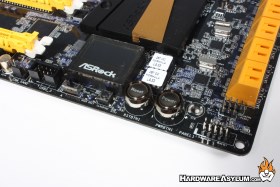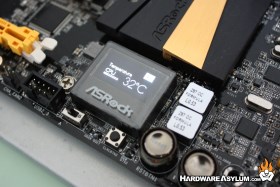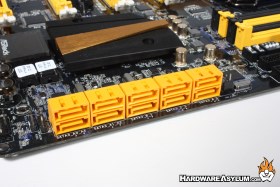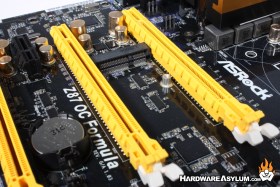ASRock Z87 OC Formula Overclocking Motherboard Review
Author: Dennis Garcia
Published: Monday, August 19, 2013
Board Layout and Features Continued
Dual channel memory comes standard on the Haswell processor and the Z87 OC Formula supports standard speed DDR3 modules up to 1600Mhz with overclocking support up to 3000Mhz. A maximum of 32GB is addressable however a 64-bit OS is required to access it all. 24pin ATX power is located in the traditional location near the upper edge of the motherboard and out of the primary airflow.
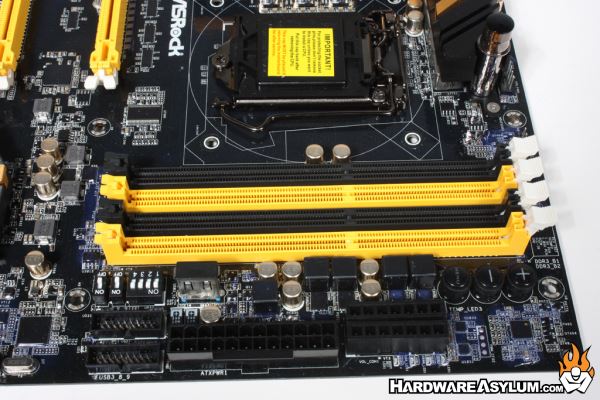
Next to the 24pin power connector you will find three very important features starting with voltage check points to the right. These give you accurate voltage readings so you can watch for voltage drops when overclocking and monitor what the system is doing. Below the power connector you'll find a single internal USB port next to a bank of PCI Express disable switches. The two remaining switches are for slow mode and LN2 mode.
The buttons in the upper corner control the onboard status OLED screen located at the bottom of the motherboard. Menu will activate additional options while plus(+) and minus(-) switch the display. If the menu button isn't enabled the buttons control the overclock using Rapid OC.
The buttons in the upper corner control the onboard status OLED screen located at the bottom of the motherboard. Menu will activate additional options while plus(+) and minus(-) switch the display. If the menu button isn't enabled the buttons control the overclock using Rapid OC.
Benchtop buttons and CMOS switch are located in the lower portion of the motherboard and consist of power and reset. The extent of the onboard interfaces appears to be rather limited when compared to some of the other motherboard we have used but, in reality this is all you really need given that most of the tweaking will occur in software or in the UEFI before the system boots.
Internal SATA connections number ten and follow the new SATA6 connection standard. Six ports come directly from the Z87 chipset while the other four come from the included ASMedia controller.
Internal SATA connections number ten and follow the new SATA6 connection standard. Six ports come directly from the Z87 chipset while the other four come from the included ASMedia controller.
Between the video card slots you'll find a Mini PCIE connector for WIFi and BT connectivity. The space to the mounting hole is quite small so there is little chance that a SSD cound be installed. This port shares bandwidth with PCI Express slot #5 (the 1x at the bottom of the motherboard)

